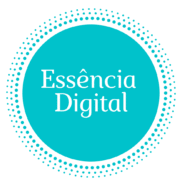A brilliant, validated idea is only the beginning. In the competitive digital marketplace, the difference between a product that sells and one that sits on a virtual shelf often comes down to one thing: the experience. How your product is built, structured, designed, and delivered—its “packaging”—is just as crucial as the information it contains.
A great digital product doesn’t just provide content; it guides the user on a clear path from their current problem to their desired transformation. A premium experience not only delights customers but also increases the perceived value of your product, justifying a higher price point and generating powerful word-of-mouth referrals.
This guide explores the key elements of building and packaging a digital product that is not only useful but also a pleasure to use.
The Architecture of Transformation: Choosing the Right Format
Before you build anything, it’s essential to choose the right format for your solution. This decision should be based on two key factors: the nature of the problem you are solving and the preferences of your target audience. The format is the architecture that will house your solution.
Here’s a framework to help you decide:
- If the problem is a lack of KNOWLEDGE…
Your solution should be educational. This is perfect for a comprehensive video course, a detailed ebook, or an in-depth workshop. These formats are ideal for teaching a skill or a complex topic from the ground up. - If the problem is a lack of TIME or SKILL…
Your solution should be a shortcut. This is where templates (Notion, Canva, Figma), toolkits, presets, or code snippets shine. You are saving your customer hours of work by providing them with a pre-made, professional starting point. - If the problem is a lack of a SYSTEM…
Your solution should provide organization. This is ideal for a custom spreadsheet, a Trello board template, or an Airtable base. You are selling an organized, repeatable process that brings order to their chaos. - If the problem is a lack of COMMUNITY or ACCOUNTABILITY…
Your solution should be interactive. This is the domain of paid membership communities, cohort-based courses, or group coaching programs. You are selling connection and shared progress.
The User’s Journey: Structuring for Clarity and Completion
A common failure point for digital products is a low completion rate. This often happens when the content, however valuable, is presented as a massive, unstructured “data dump.” A great product is designed like a thoughtful journey, guiding the user step-by-step toward their goal.
Structure your product with a clear beginning, middle, and end:
1. The Onboarding (“The Welcome”)
The first few moments a customer spends with your product are critical. Your onboarding should make them feel smart, capable, and excited.
- Provide a “Start Here” guide or video.
- Explain how to get the most out of the product.
- Offer a “quick win”—a simple first step they can take immediately to see a result.
2. The Core Content (“The Work”)
Break down your main content into logical, digestible modules or chapters.
- Use short lessons (5-15 minutes for videos is ideal).
- Use a mix of media (video, text, worksheets, quizzes) to cater to different learning styles.
- Provide clear action steps at the end of each lesson.
3. The Offboarding (“The Transformation”)
The end of your product should feel like a satisfying conclusion.
- Summarize the key takeaways and the transformation the user has achieved.
- Provide a clear “What’s Next?” section to guide their ongoing journey.
- This is the perfect moment to ask for a testimonial.
Your Creator Tech Stack: Choosing the Right Tools
You don’t need to be a technical genius to build a professional-looking digital product in 2025. The market is filled with user-friendly tools. The key is to choose a simple, effective “tech stack” and not get overwhelmed by options.
For Hosting and Selling Courses & Memberships:
- Simple Start: Gumroad is incredibly easy to set up and is perfect for selling your first course, ebook, or template.
- All-in-One Platforms: Teachable, Thinkific, and Kajabi offer more robust features for building a full-fledged online school with advanced quizzing, marketing, and community features.
For Creating Written and Visual Products (Ebooks, Templates, Workbooks):
- Beginner-Friendly: Canva is a powerhouse for creating beautifully designed PDFs, slide decks, and social media templates, even with no design experience.
- Professional Control: Figma and Adobe InDesign offer more advanced control for creating complex layouts and professional-grade design assets.
The Power of Perceived Value: Why Great Design Matters
The design of your digital product is its packaging. Just like in a physical store, better packaging signals a higher quality product and can justify a premium price. A well-designed product feels more trustworthy, more valuable, and more enjoyable to use.
Focus on these key design elements:
- A Professional Product Cover: Create a stunning and informative cover image or thumbnail. This is your product’s “first impression.”
- Consistent Branding: Use your brand’s colors and fonts consistently throughout all product materials, from the sales page to the final PDF workbook.
- Clean and Readable Layouts: Use plenty of whitespace, clear headings, and a legible font size to make your content easy to consume.
Conclusion: Design an Experience, Not Just Content
Building a successful digital product is a profound act of empathy. It requires you to deeply understand your customer’s challenges and then thoughtfully design an experience that guides them to a solution in the clearest, most effective, and most enjoyable way possible.
Don’t just create content; design an experience. Don’t just provide information; deliver a transformation. That is the difference between a product that is purchased and a product that is valued, completed, and recommended for years to come.

